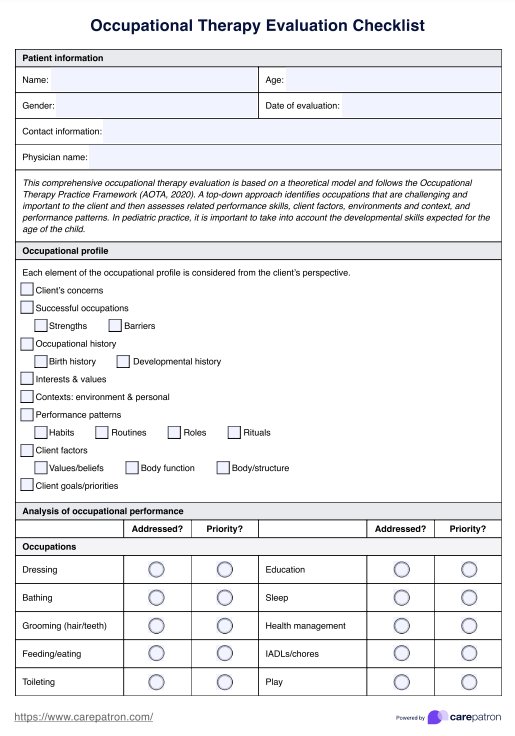An occupational therapy (OT) evaluation consists of two main components: the occupational profile, which gathers information about the client’s background, interests, and daily routines, and the analysis of occupational performance, which assesses the client's abilities in performing specific tasks. The evaluation aims to identify strengths, weaknesses, and areas that need intervention.

OT Evaluation Checklist
Download Carepatron's free PDF of an Occupational Therapy Evaluation Checklist. Learn how it helps assess and document progress effectively for OT patients.
OT Evaluation Checklist Template
Commonly asked questions
The sequence of an occupational therapy evaluation typically begins with gathering the occupational profile, followed by analyzing occupational performance through specific assessment tools. The findings are then used to create an intervention plan that addresses the client's needs and goals.
The 7 core occupational therapy (OT) values are altruism, equality, freedom, justice, dignity, truth, and prudence. These values provide a foundation to guide occupational therapy professionals to interact with OT patients.
EHR and practice management software
Get started for free
*No credit card required
Free
$0/usd
Unlimited clients
Telehealth
1GB of storage
Client portal text
Automated billing and online payments











